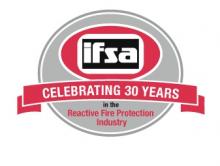IFSA Opinion piece: response to CLG’S Determination on the need for intumescent seals on hotel doors
IFSA Opinion piece: response to CLG'S Determination on the need for intumescent seals on hotel doors
The determination concluded that a new Fire Risk Assessment (FRA) should be prepared for a hotel where no intumescent seals were fitted to the existing bedroom doors but, on this occasion, the absence of the seals should be recorded and justified. This would apparently contradict the world-wide trend to fit such seals where legislators and researchers have recognised the assurances that such seals are able to provide in the event of a fire incident, ensuring that a small fire never has free rein over a property jeopardising the lives of many, rather than the few. Sadly, the conclusion from the Determination relies heavily on poorly interpreted history and statistics.
The ‘Responsible Person’ is of the opinion that as the hotel had received a fire certificate under the 1971 Fire Precautions Act with doors installed that did not have fire seals fitted, this indicated that such doors were deemed to be suitable for purpose at that time and should continue to be so.
In 1971, the principle of heat activated intumescent seals had not been invented (the technology of intumescent was in its infancy) and the test method for evaluating fire doors was seriously in error.
The test used to evaluate the life safety potential of a fire door was operated at a negative pressure which ‘sucked’ air into the protected space (the bedroom) from outside (thereby drawing fresh cold air into that space), rather than forcing the fire gases out of the room, due to the inevitable pressure generated by the fire gases forcing flames and hot gases out into the common corridors.
Since the 1970’s, every fire resistance test standard in the world has removed the negative pressure test in favour of a test that mimics the reality of a real-life fire, which is based upon the International Standard (ISO) procedure. How can a hotel in the UK depend upon 41 year old technology to protect its residents on the say-so of a ‘responsible’ person’s opinion? How did the responsible person identify a ‘competent’ person who would share those views? We can only hope that the competent person is well insured and can sleep with a clean conscience.
There have been many changes in hotel furnishings and construction since 1971. Furniture has been increasingly replaced by flat packs and manufactured from wood based composites and bathrooms have increasingly replaced by ‘gap’ pods, both having increased heat release and potentially greater smoke production.
Unsurprisingly, the responsible person proposed that only 1 death per year has occurred in a hotel since 2002 and inferred there was no problem. Isn’t that about the time we started to fit intumescent seals onto hotel doors in earnest? Is that pure coincidence? Fortunately, statistics show that our commercial environment is fairly safe with respect to fire due to the technology that has been introduced, but that must not lead to complacency.
A fire safe environment relies on the interaction of many technologies, not just one and we will rue the day when we put our life in the hands of any one of them. It’s amazing how quickly the image of the Penhallow Hotel fades from the front page of our national press, such that it is no longer remembered by those responsible for our safety.

